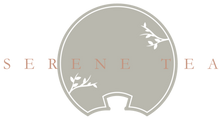Thailand Wawee Gu Shu White Tea 2022














Regular price $62.00
Cultivar: Old Bush Da Ye Zhong/Camellia Assamica
Harvest: Spring 2022
Origin: Wa Wi or Wawee Village, Chiang Mai, Thailand
Cup: 1 tbsp/5g for 25 gong fu cha cups
Net Weight: 200g
Meet the farmer: Kasem (read about him and his tea plantation here)
Honey like viscosity on the palette, wildflower honey like sweetness, subtle raw Pu Erh notes, very smooth to drink with a good Cha Qi
Full Description
Drinking this tea is like witnessing a flower slowly blooming on a tea tree. Pu Erh white tea is processed as a white tea but made with tea leaves from Pu Erh trees. This white tea is a customized order of handpicked one bud with one leaf from Gu Shu trees in Kasem's farm from this spring, and then pressed into cakes. It tastes very different from white teas in Fu Ding, China. It's more subtle with agreeable and very enjoyable fragrance, and you can sense a raw Pu Erh undertone in the tea. The liquor feels more thick and
viscid on the palette compared to Fu DIng white teas. If you are unfamiliar with Pu Erh whtie tea, we highly recommend it!
*The white tea cake piece in the pics here is from last year. We just use it as an example to show you what the finished tea cake will look like. Our cake wrapper design is inspired by traditional Thai painting of flowers and a bird specie found in Thailand known as myna.*
Kasem is the second generation Thai Chinese from Wawee, and his father was one of the very first Chinese immigrants in the area that advocated for tea tree's protection. His father started with buying a small piece of land with wild tea trees 50 years ago and was able to piece the land together and passed this legacy to Kasem eventually. His tea plantation looks rather like a Pu Erh forest that's about 20 acres and filled with wild old bushes that are about 500-800 years old. Without pesticide or fertilizer, his greatest challenge is how termites could eat up a tree over a period of time. When you drink his raw Pu Erh tea, especially the aged ones, there's a bold and strong Cha Qi in them. Unlike some of the Chinese raw Pu Erhs from Yun Nan that has a tobacco flavor because of pan frying or machne drying, his processing style is rather delicate and focus on keeping the tea's natural state. He only sun dries his raw Pu Erhs.
Additional information on Wawee Village's history and geographic location
Wawee village also has a Chinese name, which is called Cha Fang Cun, and it means "Tea House Village". This region is mostly occupied by a local indigenous group called Aka and Chinese immigrants from the 50s and 60s, who were Kuomingtang (the National Party) and came from Yun Nan in horses by following the Ancient Tea Horse Road, then took refugees in northern Thailand. Nowadays, their descents are the 2nd and 3rd generation of Thai Chinese and either inherited the craftsmanship of making Pu Erh tea from their fathers or grandfathers, or acquired such skills through learning from tea masters in Taiwan or in Yun Nan later on.
It is located in the heart of the Golden Triangle, close to the border of Myanmar, and it has a mix culture of Yun Nan, Thai and Myanmar. Local farmers tell the tale of the wild Pu Erh tea tree forest in this area in the past, and how they have lost up to 50% of them because of ignorance and other agricultural needs. Some families, such as Kasem's, understood the importance of protecting such tea trees early on and is still an active advocate in the village.
Brewing Instruction Gaiwan & Teapot
|
Gaiwan: 5 secs ceramic pot: 3 mins |
|
| Add 5gram/1 tbsp | |
| 90 C / 195 F |
Top Health Benefits
-
Strengthening teeth & preventing tooth decay.
-
Lower blood sugar level & reduce high blood pressure.
-
Aids weight loss by suppressing the synthesis of fatty acids, which helps to stop producing higher levels of fat.
For education purpose only. This information has not been evaluated by the Food and Drug Administration. This information is not intended to diagnose, treat, cure, or prevent any disease.














